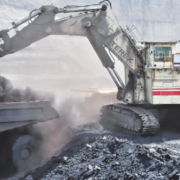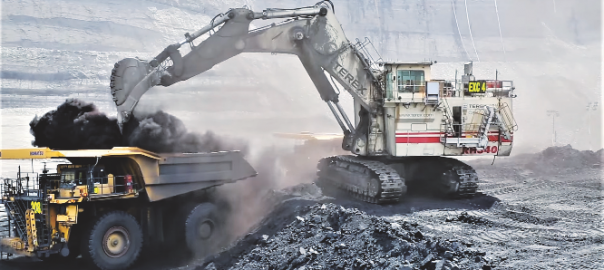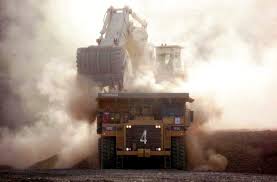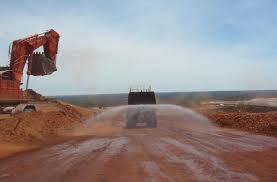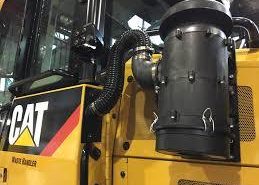Lyons Leads the Way in ISO Cabin Filtration Standards
 Airborne dust particles can cause short term impact on mining productivity and long-term impacts on workers’ health. Safe to Work speaks to Lyons Airconditioning Services about how it combines its renowned Australian knowledge with Sy-Klone International’s cab air quality systems and air filtration products to lead the way in dust control and help mining companies meet ISO 23875, the soon to be published mining industry specific air quality standard.
Airborne dust particles can cause short term impact on mining productivity and long-term impacts on workers’ health. Safe to Work speaks to Lyons Airconditioning Services about how it combines its renowned Australian knowledge with Sy-Klone International’s cab air quality systems and air filtration products to lead the way in dust control and help mining companies meet ISO 23875, the soon to be published mining industry specific air quality standard.
Sy-Klone and Lyons Airconditioning Services are partnering to give companies like Rio Tinto, Fortescue Metals Group and Macmahon Holdings direction and consultation on dust control.
Perth-based Lyons is ensuring that dust control measures used across Australian mines meet International Organisation for Standardisation (ISO) standards, ensuring safety for workers. One such standard is ISO 23875 “Operator enclosures – Air quality control systems and air quality performance testing,” which is expected to be published in Q1 2021. Lyons is actively working with mining companies across Australia to help address the performance requirements outlined in the standard, in part by installing Sy-Klone’s ISO 23875 compliant RESPA® cab air quality system.
Dust particles and airborne contaminants found in mining environments, such as coal, silica and asbestos dust, as well as odours, can filter into the cabin and be breathed in by workers.
They can cause long-term health conditions like coal mine dust lung disease, silicosis, mixed dust pneumoconiosis, dust-related diffuse fibrosis and chronic obstructive pulmonary disease.
With the introduction of new Industrial laws across Australia, and new international standards, such as ISO 23875, the onus is more than ever on mining companies to take care of their employees’ health and wellbeing.

Lyons Airconditioning Services is guarding mine workers from these health risks, distributing Sy-Klone’s range of RESPA pressurizer, precleaner and filtration system; high efficiency RadialSHIELD® filters; and cabin pressure monitor throughout the mining and construction industry to block out nanoparticles and other harmful contaminants, keeping them out of vehicles and safeguarding workers.
As Lyons general manager Emmanuel Lardis explains, the companies are united by their common goal to protect workers and set the benchmark for cabin filtration safety.
“With our ability to maintain dust concentration levels well below required limits we are protecting the operator’s lung health and giving them a chance to live a long productive life. By keeping contaminants and dangerous dust particles outside of the machine’s cab, Lyons is keeping the operator safe and making sure they get home for that day and the next 20 to 30 years down the track,” Lardis tells Safe to Work.
“Sy-Klone’s and Lyons’ combined team of experts are able to formulate solutions to meet the latest international standards, including the new mining air quality standard, ISO 23875.”
ISO 23875 covers safety in mining, with an emphasis on air quality control and how to implement effective air quality control systems, dilution of carbon dioxide (CO2) and routine testing of air throughout the cab. “ISO 23875 establishes a consistent set of operator enclosure air quality control requirements for mining companies across the globe. Lyons has the in-depth knowledge of the Australian mining industry, the mechanical expertise, and the experience installing Sy-Klone’s air filtration products, to help mining customers solve the most complex air filtration challenges; including meeting the requirements of ISO 23875,” said Austin Browne, Vice President Marketing for Sy-Klone International.
Lyons distributes Sy-Klone RadialSHIELD filters including HEPA (ISO 35 H) and MERV 16 options, both of which use high-tech filtration media, highly effective in removing biological nanoparticles such as COVID-19, silica, asbestos, and other dangerous particles from the air. Lyons not only distributes the Sy-Klone products, but also provides Australian mining clients with personalised feedback and instruction regarding their dust control measures.
“Lyons provides direction and expertise through our vast experience of more than 35 years in the mining industry,” Lardis says.
“In association with our partners, like Sy-Klone, industry associations and bodies that work in health and safety for cabin filtration, we can provide solutions that are fit for purpose for a particular site or the contaminant they are having issues with.”
Lyons was eager to partner with Sy-Klone for its global reputation and the versatility of its range, with one air filtration system having the ability to address multiple challenges and sites across a mining company’s portfolio including odour, gas and particulate filtration
Another attraction of the Sy-Klone range Lyons highlights is the superior ability to extend filter life to meet the maintenance schedule for the mining equipment.
“The reason we are moving towards the Sy-Klone range is that one system will suit multiple sites,” Lardis says.
“You install the system once and depending on what contaminant you are trying to overcome, is the type of filter you use for that system. The system doesn’t necessarily change but the filter will. The Sy-Klone filtration products include particulate, gas, and odour options, which can be customised depending on site requirements.
“The Sy-Klone range filter is designed to last until the scheduled maintenance every 500 hours, which matches most vehicles’ maintenance service intervals. If your filter can last until your next service, you don’t need to shut down the machine. Every hour a machine is out of work, can cost hundreds of thousands in lost productivity.”
At the helm of Lyons is its team of experts, who often work remotely on site with mining companies, offering their advice on tackling contaminants that are known issues in the local area.
Lyons Senior Commercial Manager Ryan Wheeler, who along with the company’s senior technicians, is one of the experts that visits client sites to complete audits on equipment and ensure they are complying to implementation and industry standards.
“Lyons works closely with clients to advise them on overcoming issues they are having on site, so we can provide a solution to protect operators inside the cabins,” Wheeler tells Safe to Work.
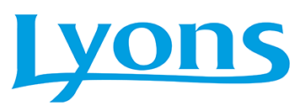







 Sy-Klone filtration is used in various mining operations throughout the world. In Colombia South America, Sy-Klone is the preferred automotive cabin and engine filtration systems, for some of the largest coal mines in the country. Cerrejon and Drummond Coal are two worth mentioning. Cerrejon is the largest open pit coal mine in the world and likely the longest in continuous operation.
Sy-Klone filtration is used in various mining operations throughout the world. In Colombia South America, Sy-Klone is the preferred automotive cabin and engine filtration systems, for some of the largest coal mines in the country. Cerrejon and Drummond Coal are two worth mentioning. Cerrejon is the largest open pit coal mine in the world and likely the longest in continuous operation. type.
type.
 Pacific, Glencore and many more depend on Sy-Klone to keep their operators safe and their equipment operational.
Pacific, Glencore and many more depend on Sy-Klone to keep their operators safe and their equipment operational.



